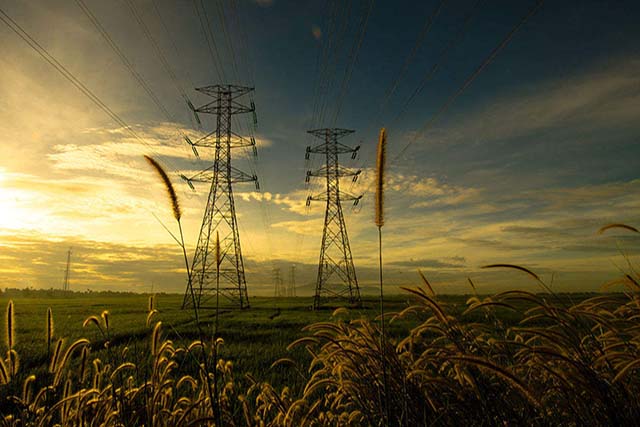The plan is to make it mandatory for discoms to procure a specified percentage of hydropower, as is the case for solar , wind, etc., with a penalty for non-fulfillment.
The Ministry of Power of the Union (MoP) has sought input from various stakeholders on the draft Electricity (Amendment ) Bill 2020. In 2018, too, MoP introduced the Electricity Amendment Bill, which reached the Standing Committee on Power. Nonetheless, due to the opposition of employees' power utilities unions and the lack of unanimity among other stakeholders on carrier segregation and the content market, Bill lapsed.
This time, MoP intends to put in place the regulatory framework, the establishment of commissions and the appointment of chairpersons and members, provide for the required procurement of hydro and other renewable energy sources and ensure that no power is scheduled unless the payment protection system is in place. Electricity is a concurrent topic as laid down in the Seventh Schedule of our Constitution. However, the present proposal may give rise to a feeling among the States that the Center is trying to usurp their powers.
Throughout the preparation of the proposed amendments, MOP seems not to have consulted the Member States, some of which are likely to generate a significant financial issue for state discomfort. For example, the proposal that the retail tariff determination for discomfort referred to in Section 62 be made without taking into account the amount of subsidy that the State offers for a certain class of consumers means that all customers are to be billed at the cost of service, with the subsidy being transferred to the beneficiary 's account through DBT. At present, in a large state like Uttar Pradesh, with large rural and agricultural consumers, discomfort amounts to around Rs 10,000 crore as subsidies from the state government to help them meet payment obligations. Despite subsidies to rural consumers, collection efficiency in rural areas is low and is likely to fall even further if the full rate is charged. Furthermore, if consumers receive the subsidy as cash transfers, they could use it for purposes other than payment of electricity bills. Consequently, the monthly income of the discom is likely to plummet, making the situation worse for already ailing discomforts. The approval of States is a must before any other legislation is framed.
The bill also proposes to formalize the June 2019 MoP order to ensure that SLDCs and NLDCs do not plan power for generators whose payment security mechanism is not in place. Still, a number of generators have not been issued with the agreed payment protection system, as discoms lack the monthly revenue to open LCs and escrows in favor of all generators. And generators will also be prohibited from pursuing legal action in the event of non-payment of fees. Thus, the proposed amendment does not bear fruit until frustration can be overcome at least on a cash basis.
A new provision, 109A, has been introduced to create an Electricity Contract Compliance Authority (ECEA), which shall have exclusive power and authority to adjudicate on the performance of obligations under a contract relating to the selling, purchase or transmission of electricity, except for matters relating to the control or determination of tariffs or any conflict relating to tariffs. This will significantly undermine the right of SERCs and CERCs to settle disputes under Sections 86(1)(f) and 79(1)(f) of the Electricity Act 2003. This new law, if it is intended to provide an instrument for the speedy resolution of disputes, would allow the ECEA to settle even tariff disputes. Otherwise, it is more important to have a legitimate delegate on state commissions.
The proposed amendment to Section 63 of the Act states that if the Commission fails to adopt the tariff within 60 days, it will be deemed to have been adopted. In addition, when transparency and compliance with the government's bidding guidelines are created, the commissions have virtually no role to play in the adoption of the tariff under Section 63. The 60-day duration may further reduce the Commission's efforts to deal with stray cases of cartelisation. It would have been better to recommend that SERCs may, in certain circumstances, extend the period for the adoption of the tariff in compliance with Section 63. If the adoption of a tariff is only a formality, the purchase of power by a bidding route may be left to the generator and the licensee.
The production of hydropower is prioritized by an amendment to Section 86(1). The plan is to make it mandatory for discoms to procure a specified percentage of hydropower, as is the case for solar , wind, etc., with a penalty for non-fulfillment. With discoms paying stranded capacity charges to coal-fired power plants, there will be a double risk. The introduction of renewable energy to the kitty has had an effect on the schedule of thermal power plants, particularly during the winters and monsoons. The purchase of hydropower in the allotted quantity would raise the financial burden of the discom.
If we needed hydropower to meet a defined percentage of demand, we would have carefully prepared. After the passing of the Electricity Act 2003, we delighted generation, and the private and public sectors joined the additional capacity bandwagon, particularly coal-based ones. Nowadays, there are significant unrequired resources and several projects without PPAs. Demand has not increased as expected, and many power projects have become NPAs. It is not the best time to ask the distribution sector to purchase a defined share of electricity from hydro projects at the expense of surplus thermal power.
There have been several suggested improvements to the regulatory system, but little has been said about making the distribution segment financially viable. While the 2018 draft amendments applied to multiple licensees to make distribution competitive, there is now talk of sub-licensees and franchisors. The distribution sector, the most important part of the value chain, is under severe financial stress — we need a National Electricity Distribution Plan (NEDP) like the National Electricity Plan to find a holistic solution to its problems. In UP, following the SAUBHAGYA scheme, the number of rural consumers has increased and the current logistics of discoms can not ensure efficient metering, billing and collection. The responsibility of the Member States to meet the universal service obligation for the supply of electricity must be shared. We need to plan for decentralized generation and distribution. To order to do this, PSUs such as NTPC and PGCIL, along with other major private sector producers, need to engage to distribution. The NEDP, if it has ever been designed, can lay down the modalities in this regard.


































